The Forest Flyers
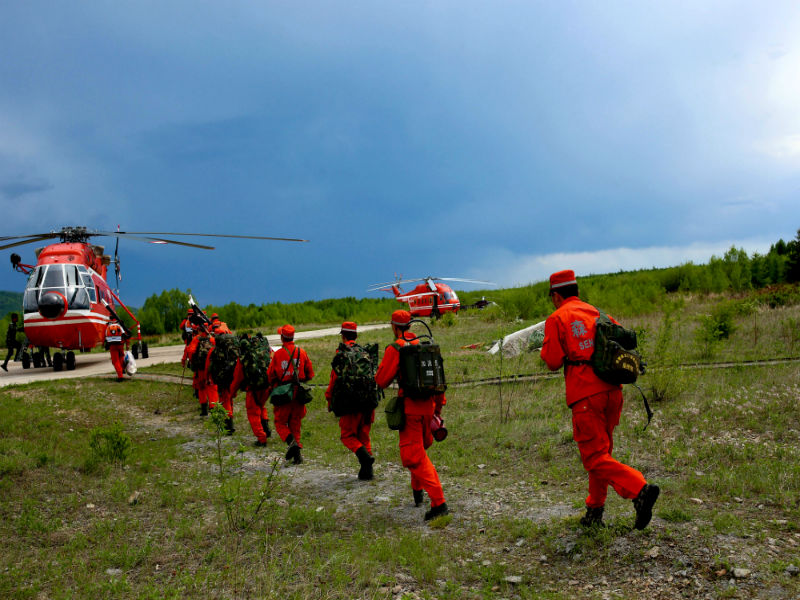
“You have no idea what a forest fire really looks like until you see one in person,” declares Zhang Yinghai, command pilot and vice director of the aviation detachment of the forest fire services division of China’s armed police forces. On May 17, 2017, he and his teammates battled with a huge fire in the Old Barag Banner near the city of Hulunbuir in Inner Mongolia Autonomous Region.
The fire had already burned 8,400 hectares of forest when Zhang’s brigade arrived. Both the aviation detachment and the ground officers, a force of 12 aircraft and more than 9,000 people, joined the firefighting efforts. In less than four days, the fire was extinguished. However, the cost of the victory was tremendous hardship, sacrifices, and danger.
“Danger is always part of our work,” says Zhang. “Recently, a fireman was rappelling from a helicopter when the rope got stuck, leaving him hanging from the helicopter. But our pilot was calm enough to carefully find a place to set him on the ground.”
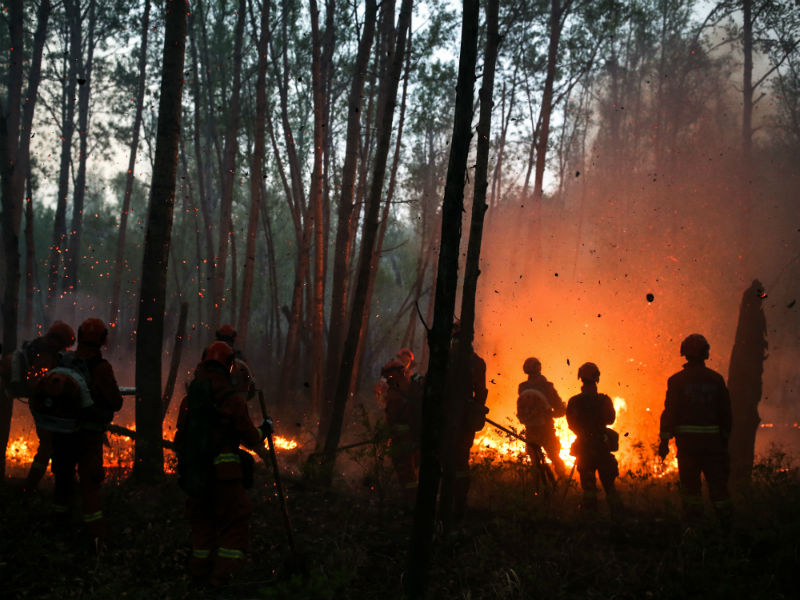
May 19, 2017: Firefighters battle with a huge fire in the Old Barag Banner near the city of Hulunbuir, Inner Mongolia.
China’s First Aerial Firefighting Force
Globally, aerial forest firefighting is nothing new. In the wake of World War II, the United States refitted many of its seaplanes from the war to carry and drop fire retardant. Canada, home to vast expanses of forests, developed a special amphibian aircraft to fight forest fires in the 1960s. It could fill up with water and travel to the fire without missing a beat.
Compared to those Western countries, China’s development of an aerial forest firefighting force started late. In July 2009, the aviation detachment was officially formed in Daqing, Heilongjiang Province in northeastern China, becoming the first forest aviation force in the country. After years of rapid development, the detachment now has 18 helicopters, three command pilots and six first-grade pilots. They provide transportation, forest protection, firefighting, patrol and search and rescue services.
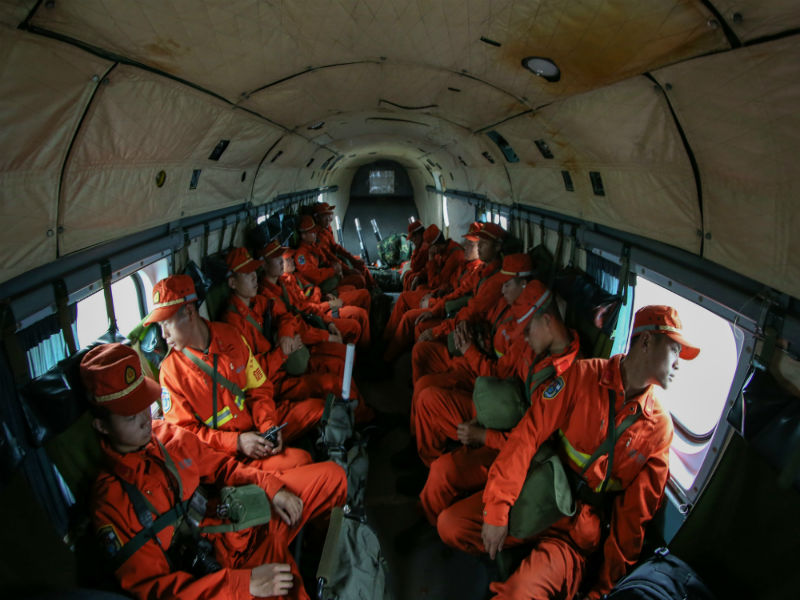
Firefighters are transported to areas near a fire by a helicopter from the detachment. Transporting firefighters by air has gradually become a common practice in China.
Just mentioning the phrase “aviation detachment” brings aerial firefighting to many people’s minds. Along with their direct fire control and prevention efforts, another major duty of the detachment is to take firefighters to areas near the fire. Air transportation of firefighters has gradually become common practice in China. “We save tons of time traveling by air, which enables us to get fires under control before they get too big,” comments Zhang. “The people involved in the firefighting save tremendous energy, so we don’t need as many.”
However, since weather in the mountains can be severe and change fast, turbulence is frequent and air-land operations are always filled with tension. Years ago, when then-vice director Lin Hongri was returning from a mission to transport firefighters for a land operation, he found the runway shrouded in clouds so thick that landing seemed impossible. He had already been in the helicopter for more than three hours and fuel was running out. Lin eventually found a small gap in the clouds to the southeast of the airport. With help from the weather radar, the experienced pilot quickly determined the precise location of the clearing. Lin flew the chopper at an altitude of just 200 to 300 meters around the mountainous areas southeast of the airport for more than 20 kilometers before landing safely.
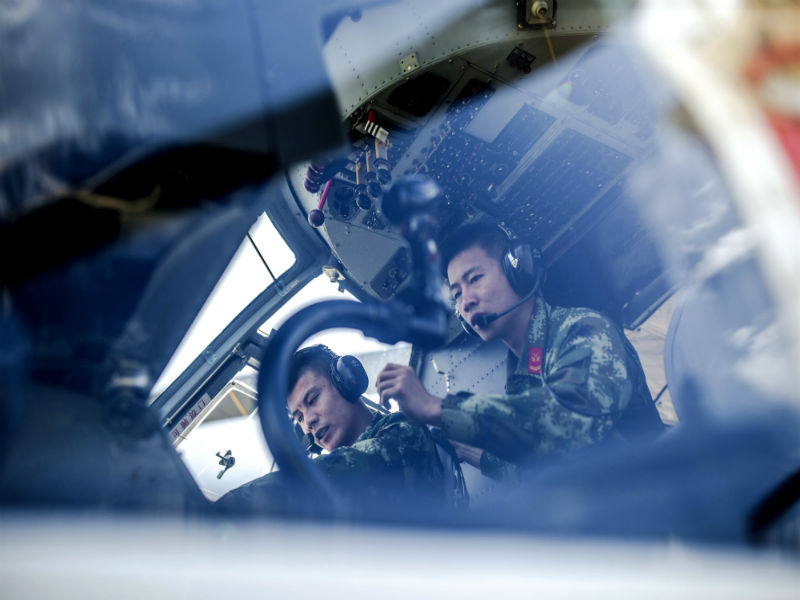
Checking the engine parameters engine parameters of a helicopter. To ensure flight safety, the detachment carries out regular helicopter maintenance.
Training in the Field
For the comparatively young aviation detachment, firefighting experience is gained both through drills and real operations.
In August 2011, the forest fire services organized a large-scale fire extinguishing field drill just as the detachment had begun formal training. When the detachment was asked about participation in the joint drill, some objected. “We had just begun training. We didn’t want to lose face by screwing up during the drill.”
However, Wang Xingkun, then air squadron commander of the detachment, was thinking differently. “We should not only join the drill, but even lead it,” he declared. “If we are afraid of losing face in peacetime, we may lose our lives to the fires. A forest fire will never wait for us to be fully prepared.”
“In recent years, firefighting experience in the United States, Russia and Canada has evidenced that dropping water from helicopters is one of the most effective methods for fire suppression,” commented Wang. The detachment decided to participate in the maneuver and used helicopters to drop water from special buckets attached with cables. Although such water drops are frequently performed in many developed countries, technical difficulties had prevented China from using them in the past.
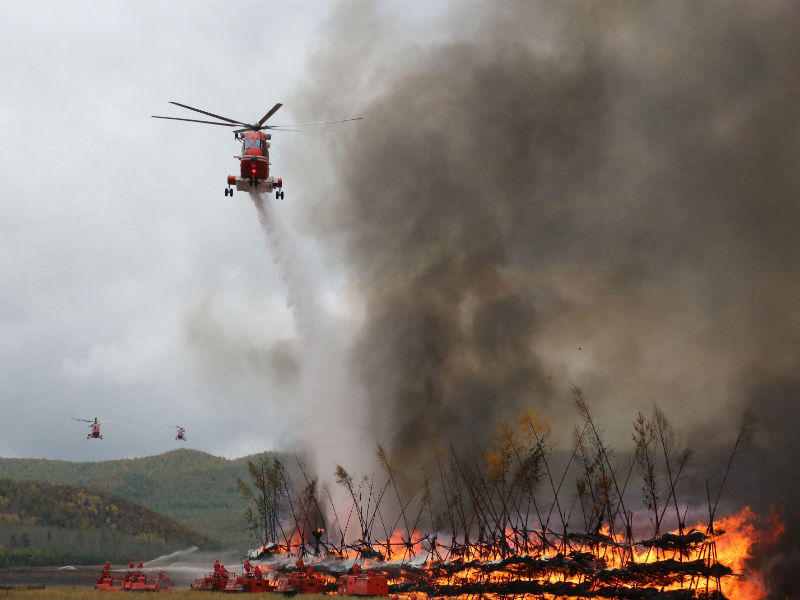
In September 2015, eight helicopters from the detachment participated in a drill organized by China’s forest fire services, working together with ground forces.
A helicopter piloted by Wang lifted off with a massive bucket for the first time. After 30 minutes of flight, the plane’s body began to shake suddenly. “What bad luck! I ran into severe turbulence,” recalls Wang. As his speed dropped, the helicopter experienced even worse shaking. In such conditions, emergency safety protocols recommend Wang release the bucket to save the helicopter. However, the veteran pilot was not keen on destroying a piece of equipment worth more than US$70,000 so fast. Gripping the controls tightly, Wang slowly reduced the amplitude of oscillation and pulled the helicopter up with all its power. Ten minutes later, the helicopter had regained stability and raced out of the turbulence. This experience provided Wang with first-hand information that he later passed on to other pilots trained to perform a helicopter water drop.
The team never stops learning. During drills, the detachment realized that if the flame front exceeds 10 meters in height, water dropped from a helicopter, if insufficient in amount, will break up into particles and oxygenate and feed the fire. After discussions, the detachment decided to do four drops right in a row. They performed experiments to determine the ideal density of following helicopters as well as air speed and the most effective maneuvers to drop the water. All these problems were solved one by one in three months. On the day when the field maneuver was carried out, Wang’s aircraft lifted off first, followed by three other helicopters, each over an interval of 30 meters. Forest fire experts spoke highly of the formation after seeing its firefighting operation, and believed that it filled the gaps in China’s forest aerial firefighting.
Their newly-developed techniques were soon put into practice. On September 18, 2015, a fire broke out in the forests of the Greater Hinggan Mountains in northeastern China. Due to many sudden changes in wind direction, the fire spread erratically and the situation remained serious for a long time. The detachment dispatched eight orange helicopters in two formations. The four choppers in the first formation performed water drops with buckets. The second formation, consisting of four helicopters with belly tanks, flew over the fire at a low altitude and dropped water from the air. The fire was contained quickly.
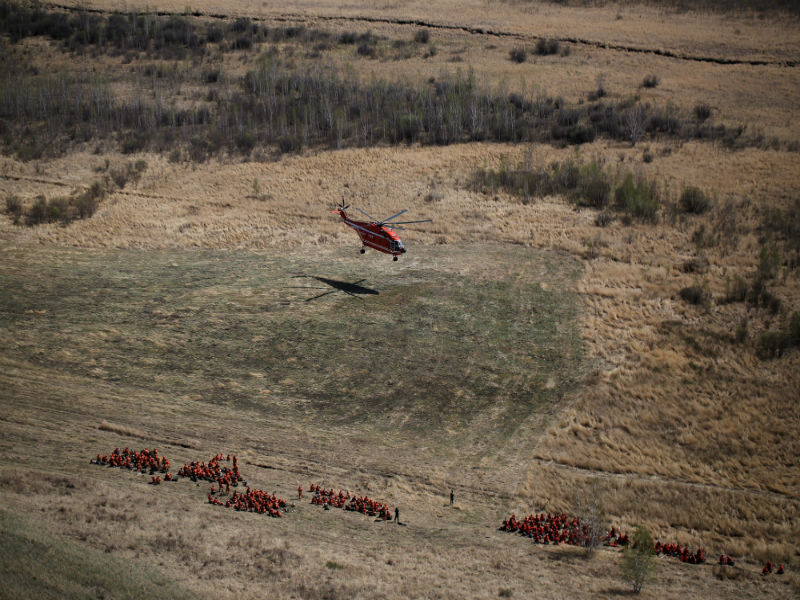
A helicopter joins the rescue efforts in a forest fire, 2017. At present, the detachment provides transportation, forest protection, firefighting, patrol and search and rescue services.
By now, the detachment has performed several hundred flights and accumulated data on more than 3,000 fires. They have also studied more than 30 difficult scenarios involving potential extreme conditions and developed more than 10 new aerial firefighting tactics.
“Fire can decimate old-growth forests in minutes,” insists Zhang. “And forest fires pose a great threat to personal and property safety, not to mention the environmental protection and water and soil preservation efforts. We carry out dangerous missions throughout the year, but we are happiest when we see our lush forests thriving safely.”